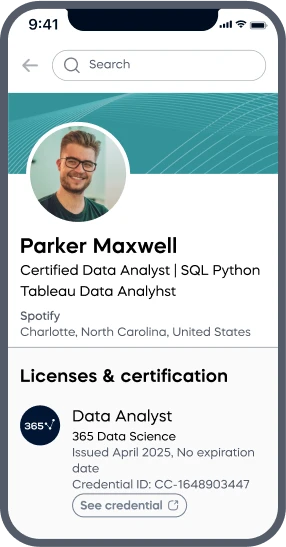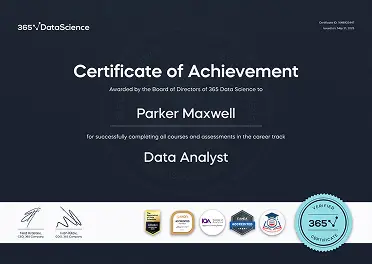Nilotpal C.
See all reviews
Master Python’s key NumPy package: Apply essential techniques for efficient data preprocessing and analysis






Skill level:
Duration:
CPE credits:
Accredited

Bringing real-world expertise from leading global companies
Bachelor's degree, Mathematics & Economics
Description
Curriculum
Free lessons

1.1 Course Introduction
5 min

1.2 The NumPy Package and Its Applications
4 min

1.3 Installing and Upgrading NumPy
2 min

1.5 What is an array?
3 min

1.8 Using The NumPy Documentation
5 min

1.10 Frequently Asked Questions
1 min
$29,000
average salary increase
96%
of our students recommend
94%
of AI and data science graduates
successfully change
ACCREDITED certificates
Craft a resume and LinkedIn profile you’re proud of—featuring certificates recognized by leading global
institutions.
Earn CPE-accredited credentials that showcase your dedication, growth, and essential skills—the qualities
employers value most.





Certificates are included with the Self-study learning plan.


How it WORKS